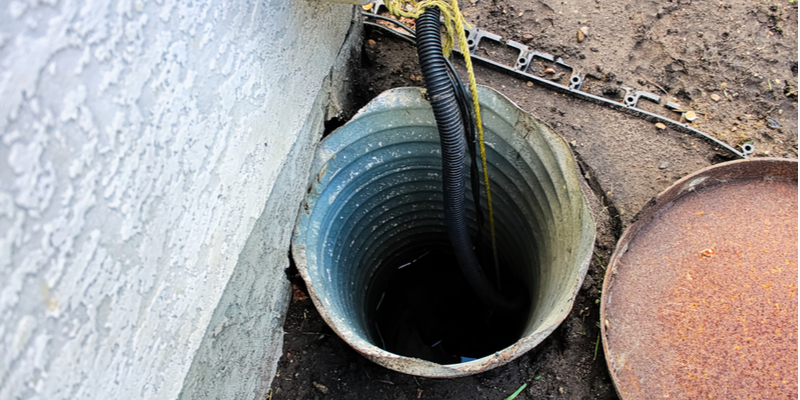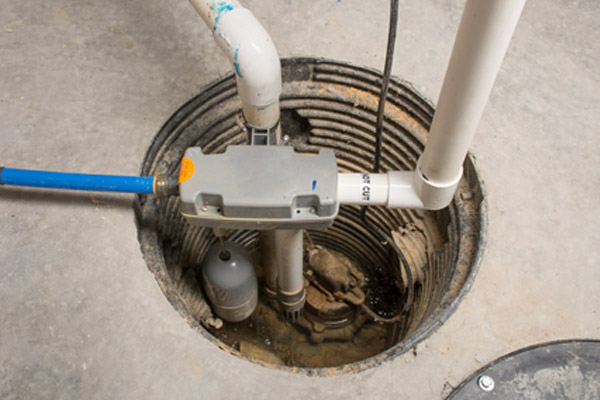Highly-Rated Steps for Taking Care of Your Sump Pump
Highly-Rated Steps for Taking Care of Your Sump Pump
Blog Article
What're your opinions regarding Steps to Cleaning Your Sump Pump Properly?

Sump pumps are essential components in numerous homes, especially in areas susceptible to flooding or extreme dampness. They help prevent water damage by effectively getting rid of excess water from cellars or crawl spaces. Nonetheless, like any other appliance, sump pumps call for routine upkeep to ensure they work effectively when required one of the most. Cleaning your sump pump is a vital part of its maintenance, and comprehending how to do it effectively can conserve you from expensive repairs and potential disasters.
Introduction
Maintaining a tidy sump pump is essential for its correct performance and long life. Ignoring this crucial job can result in clogs, malfunctions, and ultimately, water damages to your home. Therefore, discovering just how to cleanse a sump pump is essential for house owners that rely upon these gadgets to keep their basements completely dry and protected.
Comprehending the Sump Pump
Prior to diving right into the cleansing procedure, it's vital to have a basic understanding of just how a sump pump works. Usually installed in a pit or basin listed below the cellar flooring, a sump pump includes several vital parts, consisting of a pump, a float switch, and a discharge pipe. When water accumulates in the pit, the float button turns on the pump, which then pumps the water out through the discharge pipe, far from the structure's foundation.
Indicators of a Dirty Sump Pump
Knowing when your sump pump needs cleansing is critical for preventing prospective breakdowns. Some common indications that show a dirty sump pump consist of weird noises throughout operation, minimized water flow, and visible debris in the pit. If you observe any one of these signs, it's important to clean your sump pump immediately to prevent any type of more problems.
Getting ready for Cleaning
Prior to you start cleansing your sump pump, it's necessary to take some safety and security precautions. Start by turning off the power to the pump to avoid any type of electrical accidents. In addition, put on ideal protective gear, such as handwear covers and safety glasses, to secure on your own from dirt, particles, and potential microorganisms.
Step-by-step Overview to Cleansing a Sump Pump
Shutting down the Power
Begin by detaching the power supply to the sump pump to avoid any accidents while cleansing.
Getting Rid Of Particles and Dust
Utilize a container or a scoop to get rid of any kind of noticeable debris, dirt, or sediment from the sump pit. Dispose of the debris effectively to avoid it from obstructing the pump or the discharge pipe.
Cleaning up the Pump and Drift Change
As soon as the pit is clear of particles, very carefully eliminate the pump from the pit. Check the pump and the float button for any type of indications of damage or wear. Use a soft brush or cloth to clean the surface areas and get rid of any gathered gunk.
Flushing the System
After cleansing the pump and float switch, purge the sump pit with clean water to get rid of any type of remaining dust or debris. This will help guarantee that the pump runs smoothly and effectively.
Looking For Correct Performance
Prior to re-installing the pump, perform a quick test to ensure that the float button triggers the pump correctly. Pour some water right into the sump pit and observe the pump's procedure. If everything is functioning correctly, you can reassemble the pump and reconnect the power supply.
Upkeep Tips to Keep Your Sump Pump Clean
Along with periodic cleaning, there are numerous maintenance ideas you can comply with to maintain your sump pump in optimum problem:
Final thought
Cleansing your sump pump is a vital element of its upkeep and guarantees that it runs properly when you require it the most. By following the actions outlined in this guide and integrating regular upkeep into your routine, you can expand the life expectancy of your sump pump and secure your home from water damage.
6 STEPS ON HOW TO CLEAN A SUMP PUMP PROPERLY
UNDERSTANDING SUMP PUMPS
Your sump pump plays a crucial role in protecting your home by managing and removing excess water. It primarily functions as a “shield”, guarding your basement against the damaging effects of water accumulation. The pump is housed in a sump pit in the lowest part of your basement, and its job is to pump out any water that collects there.
During heavy rainfalls or when snow melts rapidly, water can infiltrate your basement, posing potential risks like flooding, structural damage, and harmful mold growth. Here, the sump pump springs into action, pumping out the intruding water and directing it away from your home.
SAFETY FIRST
Before cleaning, remember to prioritize safety. Disconnect the sump pump from the power source to prevent any accidental electric shocks. Also, wear sturdy gloves to protect your hands from any sharp or dirty components within the pump.
REMOVE THE SUMP PUMP
After ensuring your safety, the next step is to remove the sump pump from its pit. Doing this might require careful maneuvering as you don’t want to damage any pump components. Once removed, clean the sump pit to remove any accumulated debris or sludge.
INSPECT THE PUMP
Inspect the pump for any visible signs of wear or damage. Check the power cord, float switch, and impeller housing. If any components look worn out or damaged, consider replacing them to ensure optimal performance.
CLEAN THE PUMP
Thoroughly clean the pump with warm, soapy water. Make sure to rid it of any dirt, gravel, or other debris that might impede its performance. You can use a toothbrush to clean the small, hard-to-reach parts of the pump.
REINSTALL THE SUMP PUMP
Reinstall the pump into the sump pit Make sure it’s positioned correctly to remove the water effectively Once it’s back in place, reconnect it to the power source TEST THE PUMP
Finally, pour some water into the pit to ensure the pump works correctly. It should start automatically and begin pumping out the water; if it doesn’t, check the power source and the positioning of the pump.
Remember, while cleaning your sump pump is an essential part of home maintenance, hiring a professional plumber for a thorough inspection and cleaning at least once a year is also important. This will ensure that your pump is in optimal condition, ready to protect your home from potential water damage.
BEST PRACTICES FOR CLEANING SUMP PUMP DISCHARGE PIPES
Regular Inspection: Regularly inspect your discharge pipes, especially during heavy rainfall or snowmelt periods. Look for any signs of blockage or damage. Early detection of problems can prevent serious issues down the line. Periodic Cleaning: Over time, sediment and debris can accumulate in the discharge pipes, impeding the flow of water. Regular cleaning helps keep the pipes clear and functioning efficiently. You can use a high-pressure water jet to effectively clean the pipes. Insulation During Winter: In colder climates, discharge pipes can freeze, blocking the outflow of water. Protect your discharge pipes from freezing temperatures by insulating them with foam pipe insulation. This will ensure the sump pump can continue to discharge water even in freezing conditions. Proper Positioning: The discharge pipe should be positioned to direct water away from your home’s foundation. Improper positioning can lead to water seeping back into the basement. Ensure the pipe is long enough and angled correctly. Installation of a Check Valve: A check valve prevents water from flowing back into your sump pit after the pump has pushed it out. Installing a check valve helps maintain the efficiency of your sump pump and reduces the risk of flooding. Minimize Pipe Turns: Every curve or turn in the discharge pipe can decrease the efficiency of water flow. By minimizing turns and bends in your discharge pipe, you can increase the efficiency of your sump pump. https://www.fullspeedplumbing.com/how-to-clean-a-sump-pump-properly9999/

As a devoted person who reads on How To Effectively Clean A Sump Pump, I assumed sharing that excerpt was a good thing. Appreciated our review? Please quickly share it. Let somebody else locate it. Thanks a lot for taking the time to read it.
Call Today Report this page